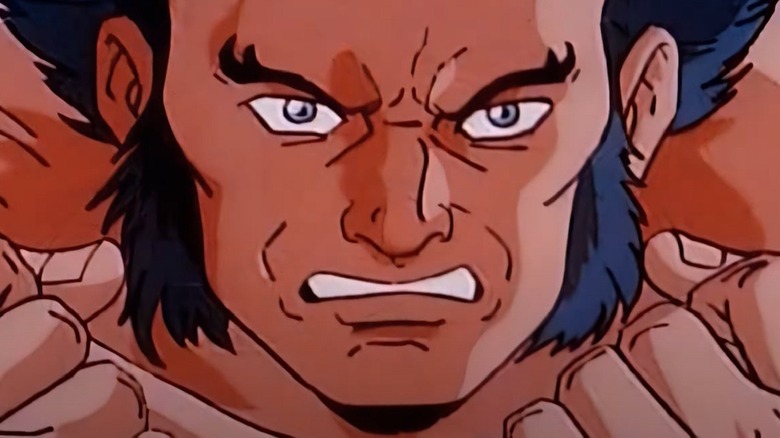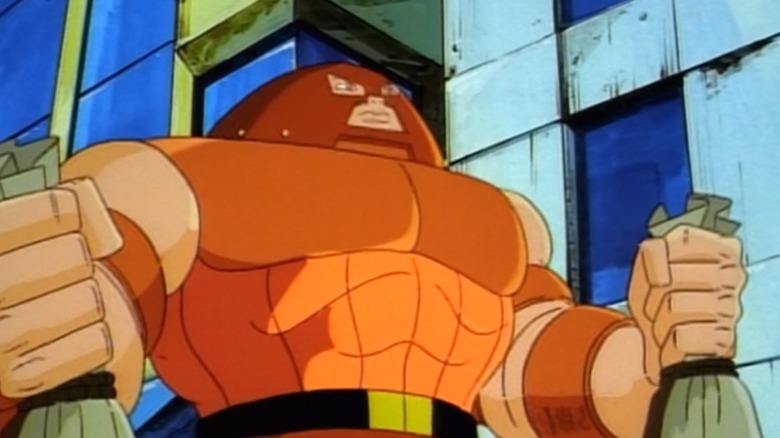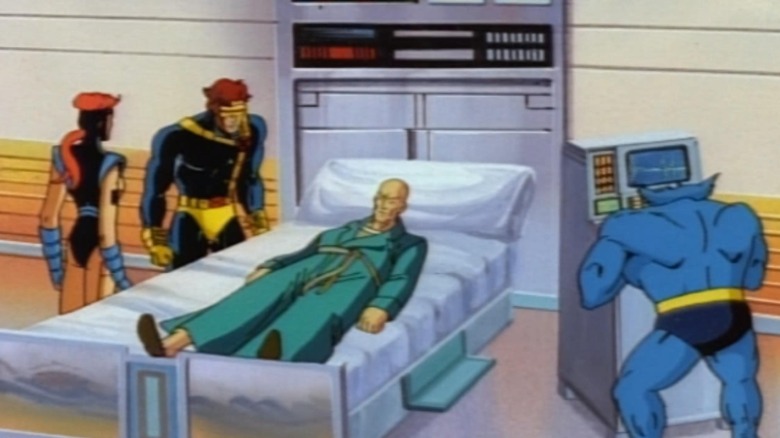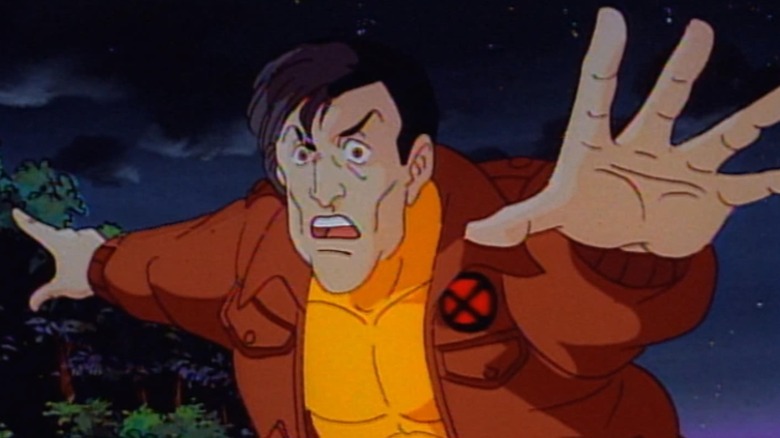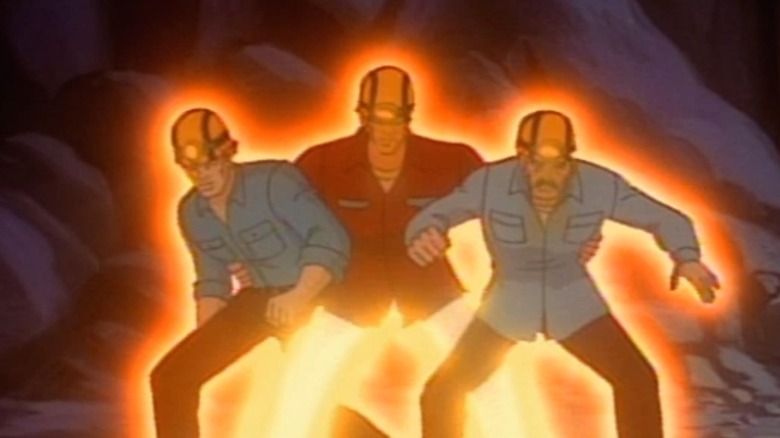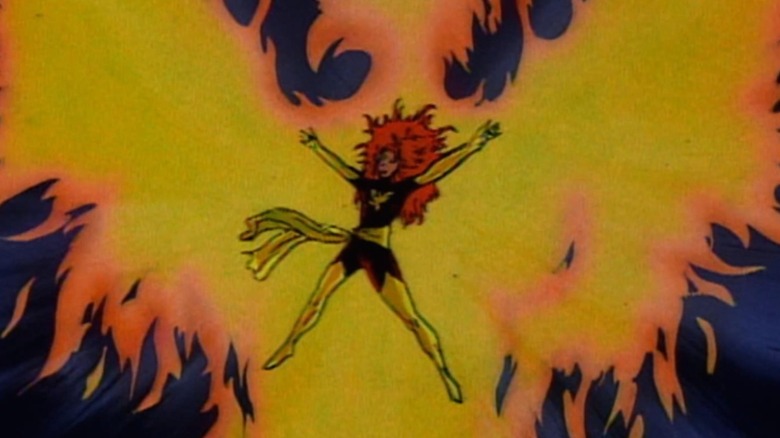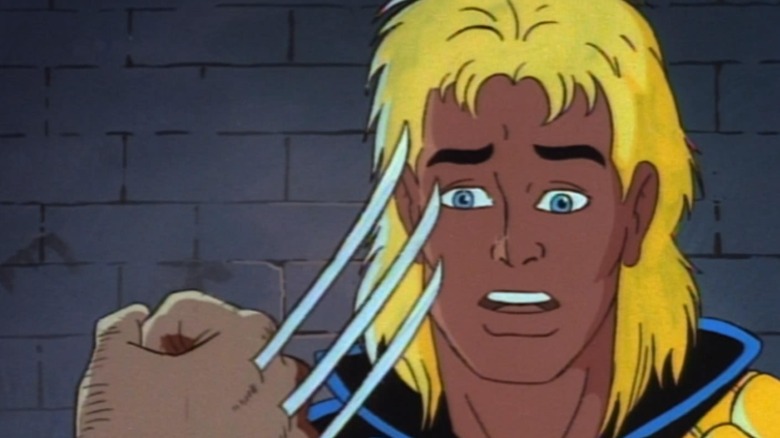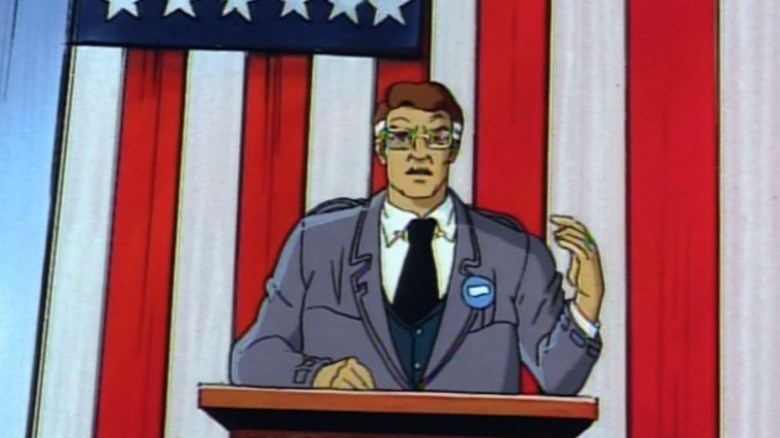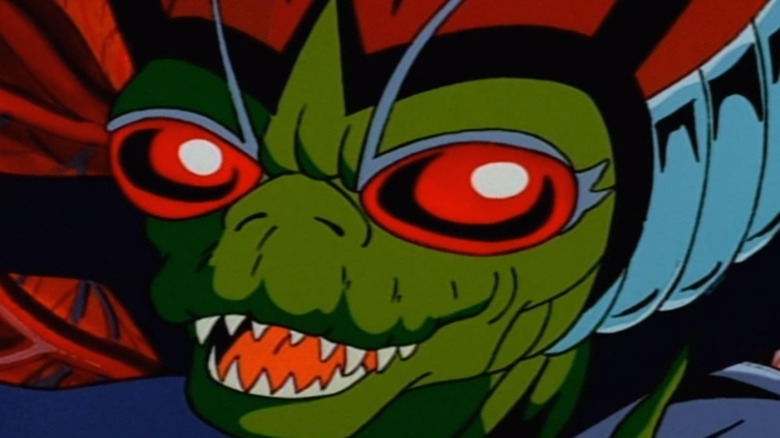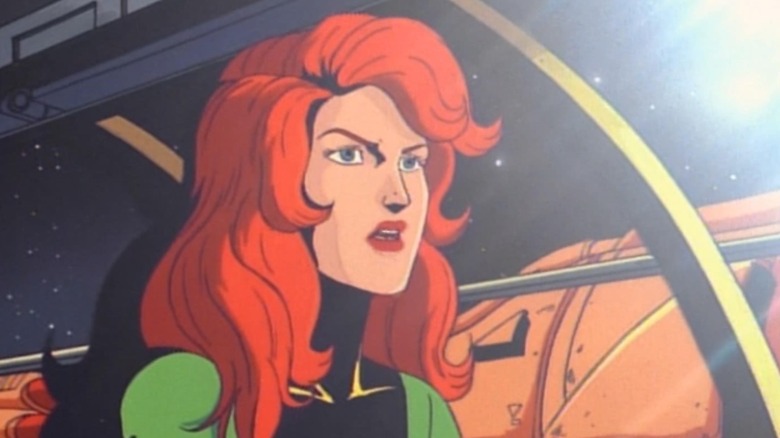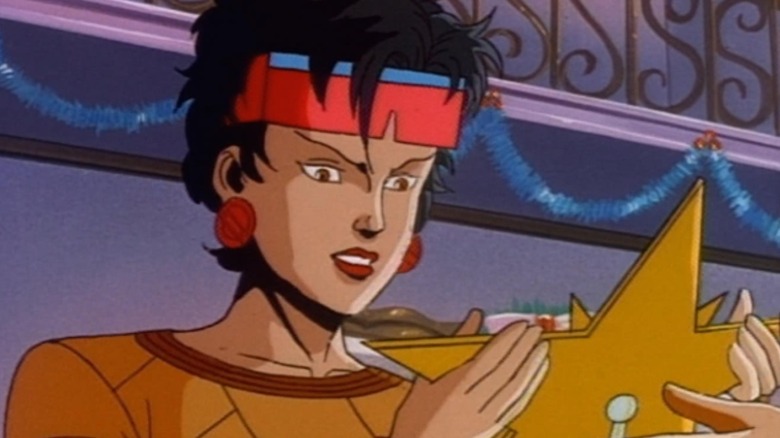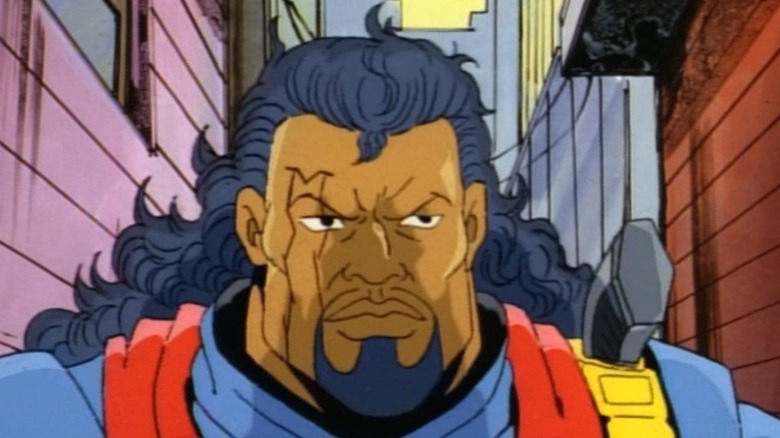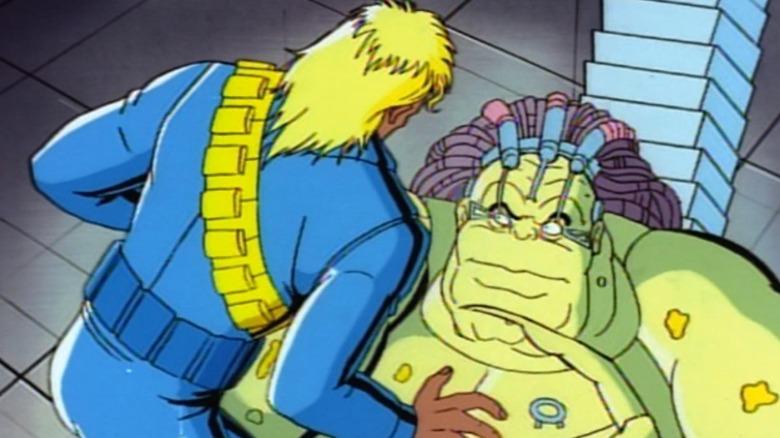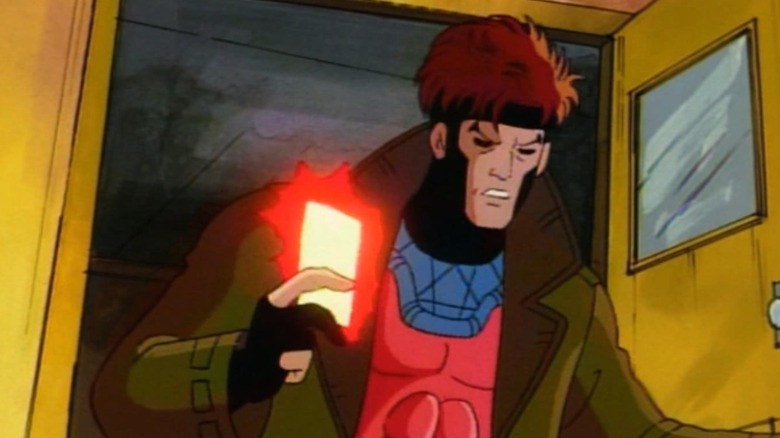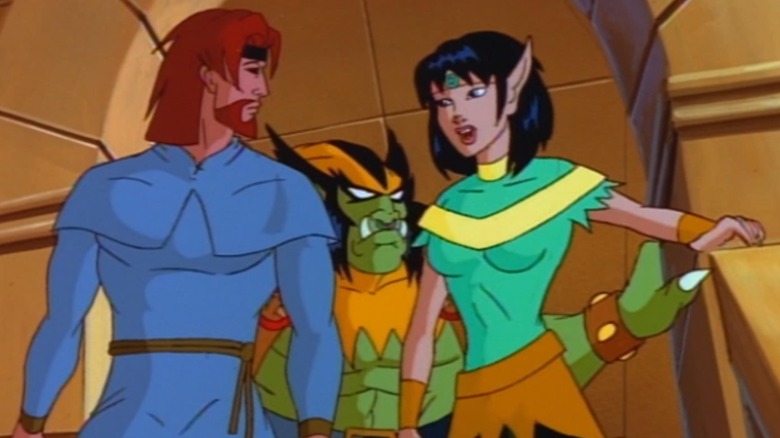X-Men: The Animated Series' 7 Best And 7 Worst Episodes Ranked
"X-Men: The Animated Series" is a landmark Marvel show that ran for five seasons from 1992 to1997. During its original run, it proved to be incredibly popular and helped bring the story of Charles Xavier's band of mutant heroes to a whole new audience. The success of the show was probably a big factor in Fox greenlighting a series of live action "X-Men" films that began hitting theaters just three years after the animated series ended. Over time, the show developed a dedicated following, and we now know that a follow-up series titled "X-Men '97" is on the way from Disney.
With a sequel series on the horizon, there's never been a better time to revisit the original '90s classic or get into it for the first time if you haven't had the pleasure yet. You may be wondering which episodes stand the test of time and which ones don't. While there is a lot to love throughout the show's entire run, certain storylines really make an impact with complex themes, compelling characters, and enthralling action, while others are far less essential. Here's our ranking of the best and worst episodes.
Best: The Unstoppable Juggernaut (Season 1, Episode 8)
"The Unstoppable Juggernaut" may not be one of the series' most important or emotional episodes, but it's an undeniably fun and thrilling episode to watch. The story begins as the X-Men return from a mission to find that the X-Mansion has been completely demolished and Charles Xavier has gone missing. While they originally blame Colossus, a gentle mutant with incredible strength and steel skin, they later determine that Juggernaut is to blame, after he begins robbing banks in a similar manner. They team up with Colossus and work together to take Juggernaut down.
This Season 1 episode marks the Juggernaut's first appearance in "X-Men: The Animated Series" and does a fantastic job of setting up one of the X-Men's greatest foes. Juggernaut's cocky attitude and mighty displays of strength perfectly encapsulate the fan-favorite X-Men villain, and they set the foundation for the character's appearances going forward. The episode is also notable for how similar the X-Men's plans to subdue Juggernaut are to the Avengers' plan to take the Infinity Gauntlet from Thanos in "Avengers: Infinity War," down to having Rogue sit on Juggernaut's shoulders, holding his head to calm him down and drain his powers.
Worst: Xavier Remembers (Season 4, Episode 16)
"Xavier Remembers" starts with a promising mystery, as the X-Men are awoken in the night by a strange psychic energy only to be attacked by mirages of some of their worst nemeses, including Sabretooth and the Sentinels. However, the mystery is quickly resolved when the X-Men discover that Xavier has been put into a psychic coma after a concussion by the Shadow King. This forces Jean to enter Xavier's mind where the two battle the Shadow King in various astral showdowns.
What makes "Xavier Remembers" such a frustrating episode is that it's brimming with potential that it never taps into. Amahl Farouk, the Shadow King, is one of the X-Men's most interesting and downright terrifying villains. The character has made chillingly memorable appearances in shows like "Legion" and "Wolverine and the X-Men," but the character is wasted here. While this isn't the only time the Shadow King appears in "X-Men: The Animated Series," the lack of exploration of the character in "Xavier Remembers" still feels like a letdown. In addition, the episode drops its more cerebral intrigue too early and spends too much of its runtime on astral battles in Xavier's mindspace.
Best: Night of the Sentinels: Part 2 (Season 1, Episode 2)
The two-part opener of "X-Men: The Animated Series" very much sets the tone for the rest of the series going forward, and it's an unexpectedly heavy and tragic tale to begin an animated superhero show with. "Night of the Sentinels: Part 2," in particular, quickly proves that "X-Men: The Animated Series" is for adults just as much as it's for kids and that episodes won't all have happy endings.
The episode begins just after the cliffhanger ending of the first part, with teenage mutant Jubilee captured by anti-mutant extremists in the government. These are the same people who were behind the Sentinel program that got her captured in the first place. While breaking Jubilee out, the X-Men lose two of their team members: Beast is captured by government agents (and is not freed until the end of the season), and Morph is killed by a Sentinel.
Despite coming early in the timeline, Morph's death is a defining moment in the show, one that stuck with many viewers. While Morph eventually returns, his prolonged absence and tragic comeback as a brainwashed villain let the viewer know that consequences matter, and each story is more than just a one-off that can be skipped.
Worst: Hidden Agendas (Season 5, Episode 13)
"Hidden Agendas" is one of the final episodes of "X-Men: The Animated Series," but it's hardly memorable for anything past that. The episode introduces Sam Guthrie (known to longtime X-Men fans as Cannonball), a young mutant living in a small southern town and working in the mines with his father. After he saves some miners from a collapsing shaft, it is revealed that the government has been looking to recruit Sam to join a mutant task force, and they are stepping up their efforts to make sure he joins them.
The setup for the episode is solid, but it quickly gets to be a bit ridiculous. The government team decides it will convince Sam to leave by spreading rumors and lies about him throughout the town, which the town easily falls for, despite having regarded him as a hero for years. When the X-Men come to town to stop the harassment against Sam, he finds out that the government wants to brainwash him using chips (which they also try to do to Gambit). Plots that pit the government against mutants are commonplace in "X-Men" stories, but the conflict in "Hidden Agendas" feels weak and underdeveloped.
Best: The Dark Phoenix: Part 4 - The Fate of Phoenix (Season 3, Episode 14)
The Dark Phoenix Saga storyline is one of X-Men's most iconic storylines, originally spanning 1963's "Uncanny X-Men" #129 to #137. The storyline has been loosely adapted in several mediums, including the feature films "X-Men: The Last Stand" and "X-Men: Dark Phoenix," along with multiple shows such as "Wolverine and the X-Men." However, the "X-Men: The Animated Series'" adaptation may be the best one, not only because it's the most faithful to the source material, but because it takes its time developing all of the story's most important elements, like Jean Grey's relationship with the Phoenix and the intergalactic conflict with the Shi'ar Empire.
"The Dark Phoenix: Part 4 – The Fate of Phoenix" is the final episode in the Dark Phoenix Saga and is the culmination of not only that storyline, but also The Phoenix Saga that began earlier in the season. It's an emotional rollercoaster, with many of the X-Men — including the usually straight-laced Cyclops — having to wrestle with the moral quandary of whether the Phoenix (and, therefore, Jean) is too powerful and unpredictable to live. The episode ends with each member of the X-Men giving a bit of their own lifeforce to save Jean, the perfect example of how strong the bond is between the team.
Worst: Longshot (Season 5, Episode 5)
"Longshot" features the return of the episode's titular hero, and with him, Mojo and his gang of Mojoverse villains. While "Longshot" is definitely a better entry in "X-Men: The Animated Series" than the previous episode featuring this cast of characters (the widely disliked "Mojovision"), it still falls short of making audiences care about the alternate dimension it centers on. The episode opens with Mojo concocting a plan to capture Jubilee to force the X-Men to once again fight in his Mojoverse battle royale reality shows. Longshot tries to save Jubilee but she is taken anyway, forcing the X-Men to team up with Longshot to rescue her.
Once the X-Men make their way into the Mojoverse, the episode does introduce some pretty cool scenarios that allow for some interesting fights (such as a scene where the X-Men have to fight some robotic dinosaurs), but the episode never pushes beyond moving from one fight to another. There are some brief flashbacks that hint at Longshot's time as a rebellion leader trying to free people from the Mojoverse that should have been more of a focus, as that story sounds a lot more interesting than the one viewers actually get.
Best: The Final Decision (Season 1, Episode 13)
Picking up just after the beloved Days of Future Past storyline, "The Final Decision" serves as the finale of the show's first season and brings to a head the Sentinels storyline that has been developing since the first episode. Despite preventing the assassination of the notoriously anti-mutant senator Robert Kelly in the previous episode, mutants are now facing even more backlash, since it was a mutant who tried to kill him. Kelly approves Sentinel creator Bolivar Trask's plan to use Sentinels to hunt down mutants, but Master Mold, the lead Sentinel, gains sentience and decides to replace all human and mutant brains with chips.
The storyline is dark and tense, and finally gives Magneto the chance to team up with Xavier and the X-Men to take down an even bigger threat. It also gives Kelly a good arc, as he starts to see mutants as humans following Master Mold's defeat by the combined mutant forces of the X-Men and Magneto. There are a lot of great thematic elements present in "The Final Decision," such as how the hubris of those in charge can often lead to their downfall.
Worst: Love in Vain (Season 3, Episode 19)
"Love in Vain" is one of the stranger episodes of "X-Men: The Animated Series," and while it has some unique and interesting ideas, its underdeveloped villains ultimately fall flat. After a massive space whale crashes to Earth, an alien race known only as Roaches emerges and captures Wolverine, trapping him inside the space whale. While he fights to escape, Rogue meets up with an old boyfriend named Cody, who tells her he still loves her and wants to run away with her. Unfortunately for Rogue, it turns out he is under the control of the Roaches and has been trying to lure her into a trap so they can become Roaches together.
As a space-faring species that uses a giant space whale to travel the galaxy trying to save their species from going extinct, the Roaches should be way more interesting than they are. There is a brief conversation between Rogue and the Roach Queen that almost makes them sympathetic, and if the episode had spent more time developing this antagonist instead of endless scenes of Rogue and Cody rehashing old romantic feelings to set up a really telegraphed twist, the episode might have been better.
Best: Phoenix Saga, Part 5: Child of Light (Season 3, Episode 7)
The fifth and final episode of the Phoenix Saga, which sets up the famous Dark Phoenix Saga later in the season, "Phoenix Saga, Part 5: Child of Light" centers around the X-Men's attempts to stop the tyrannical dictator of the Shi'ar Empire, D'Ken, from absorbing the infinitely powerful M'kraan crystal and dominating the universe with it. While the Phoenix force is able to seal D'Ken in the crystal, the universe will never be safe while other beings can get their hands on it. Therefore, Jean and Phoenix both decide that they need to sacrifice themselves and fly the crystal into the sun, a decision that is hard on all the X-Men, especially Cyclops.
"Phoenix Saga, Part 5: Child of Light" really shows off Jean's selfless qualities and her ability to always put others first. Her sacrifice during the conclusion of the episode has helped to make her one of the X-Men's most popular characters. In addition, the actions she takes to save the Shi'ar Empire make it all the more heartbreaking when the new Empress sentences her (and the Phoenix) to death during the Dark Phoenix Saga later in the season.
Worst: Have Yourself a Morlock Little X-Mas (Season 4, Episode 12)
"Have Yourself a Morlock Little X-Mas" starts out on a strong, promising note, giving several characters some rare, quiet character moments as they all prepare for Christmas at the X-Mansion. It is refreshing to see characters who tend to always be focused on the next mission getting a moment to relax, especially Cyclops, who tries (and fails) to sing Christmas songs on pitch. It's unfortunate that the main plot pulls away from these moments, especially with such an uncompelling — an non-festive — storyline.
It begins on a familiar holiday note as Storm drags Wolverine out to go Christmas shopping in Manhattan, but they soon discover that Leech (a young member of the Morlocks) is sick and may be dying. Storm convinces Wolverine to give Leech some of his blood to give him a healing factor, but the transfusion doesn't work. Then, somehow, it just does. The arc gets resolved out of nowhere, and it's an anti-climactic way to wrap up the episode. In addition, a side-plot involving Jubilee trying to give Mariana (another young Morlock) a happy Christmas feels odd, as the young mutant acts nothing like a real child, making their relationship read oddly on-screen.
Best: Days of Future Past: Part 1 (Season 1, Episode 11)
Like the Dark Phoenix Saga, the Days of Future Past storyline is one of the X-Men's most iconic tales. The two-part episode loosely adapts the comic storyline, and does a fantastic job of weaving the tale into the Season 1's narrative focusing on the Sentinel program. Much of the first part takes place in an apocalyptic future, where mutants are hunted down by Sentinels and enslaved in internment camps. It's a grim future that is all the more effective because of its real world ties to World War II.
The main protagonist of "Days of Future Past: Part 1" is Bishop, a mutant who has been tasked with hunting down other mutants in order to secure his freedom. He ends up joining the mutant rebellion after the Sentinels betray him. He is a deeply compelling character that could easily lead his own show, and while he returns for several episodes down the line, "Days of Future Past: Part 1" is definitely his most riveting appearance.
Worst: Mojovision (Season 2, Episode 11)
This is another great example of "X-Men: The Animated Series" wasting the potential of a great storyline from the comics. "Mojovision" introduces the Mojoverse, an alternate dimension filled with reality shows where contestants must fight (sometimes to the death) in order to boost the popularity of the shows, which are run by the evil Mojo. In the episode, Mojo kidnaps the X-Men to make them fight after his former lead contestant, Longshot, runs away. Jean Grey ultimately breaks free, and the X-Men return home safely.
Unfortunately, "Mojovision" fails to establish the Mojoverse in any interesting way. It quickly brushes through small bits of exposition to set it up but never really explores the terrors of the world or how its people struggle to survive. Further, Mojo is nothing more than a goofy joke and reference machine meant to parody greedy TV executives. The terrifying, sadistic Mojo seen in the comics and in other shows like "Wolverine and the X-Men" is nowhere to be seen here. Longshot, who ultimately helps save the X-Men, also feels underdeveloped, and the awesome Spiral never even gets a chance to go into battle.
Best: Days of Future Past: Part 2 (Season 1, Episode 12)
While both parts of the Days of Future Past storyline in "X-Men: The Animated Series" are truly excellent, "Days of Future Past: Part 2" inches above the first part thanks to the interesting interactions Bishop gets to have with the modern X-Men after traveling back in time, and the mystery it sets up as Gambit is accused of being the assassin who plunges the world into chaos. While it turns out to be Mystique disguised as Gambit, Bishop's attempts to save the future are noble, and it's hard not to root for him — even as he is trying to track down and kill one of the show's main characters.
The episode also provides some context as to how the world devolves into the apocalyptic nightmare viewers see in "Days of Future Past: Part 1." The montage — complete with a score that evokes the main theme from "Terminator 2: Judgment Day" — is effective at making this future seem truly terrifying. The battle at the Capitol is also a nail-biting sequence that elevates the action in the show considerably.
Worst: Jubilee's Fairytale Theater (Season 5, Episode 9)
"Jubilee's Fairytale Theater" is the lowest-rated episode of "X-Men: The Animated Series" on IMDB with a damning score of 5.6, and it's not hard to understand why. The episode is arguably the most throwaway one in the whole series. The story is dull and there's no character development, even for the titular character. The narrative revolves around Jubilee taking a group of kids on a field trip to the Carlsbad Caverns, but after a cave collapse, she makes up a fantasy tale while the X-Men come to rescue them. Sadly, neither the story-within-the-story nor the actual story itself are very interesting.
In the caves, the kids never seem distressed, nor does Jubilee actually struggle with keeping them calm. The fantasy epic that Jubilee weaves is not much better. She makes herself the main character (as an elf, for some reason) fighting against a medieval Magneto and his army of magnetically controlled suits of armor. The only redeemable element to this episode is the hilarious portrayal of Wolverine as a troll (voice actor Cal Dodd is clearly having a good time hamming his performance), but other than that, this one is definitely worth skipping.
